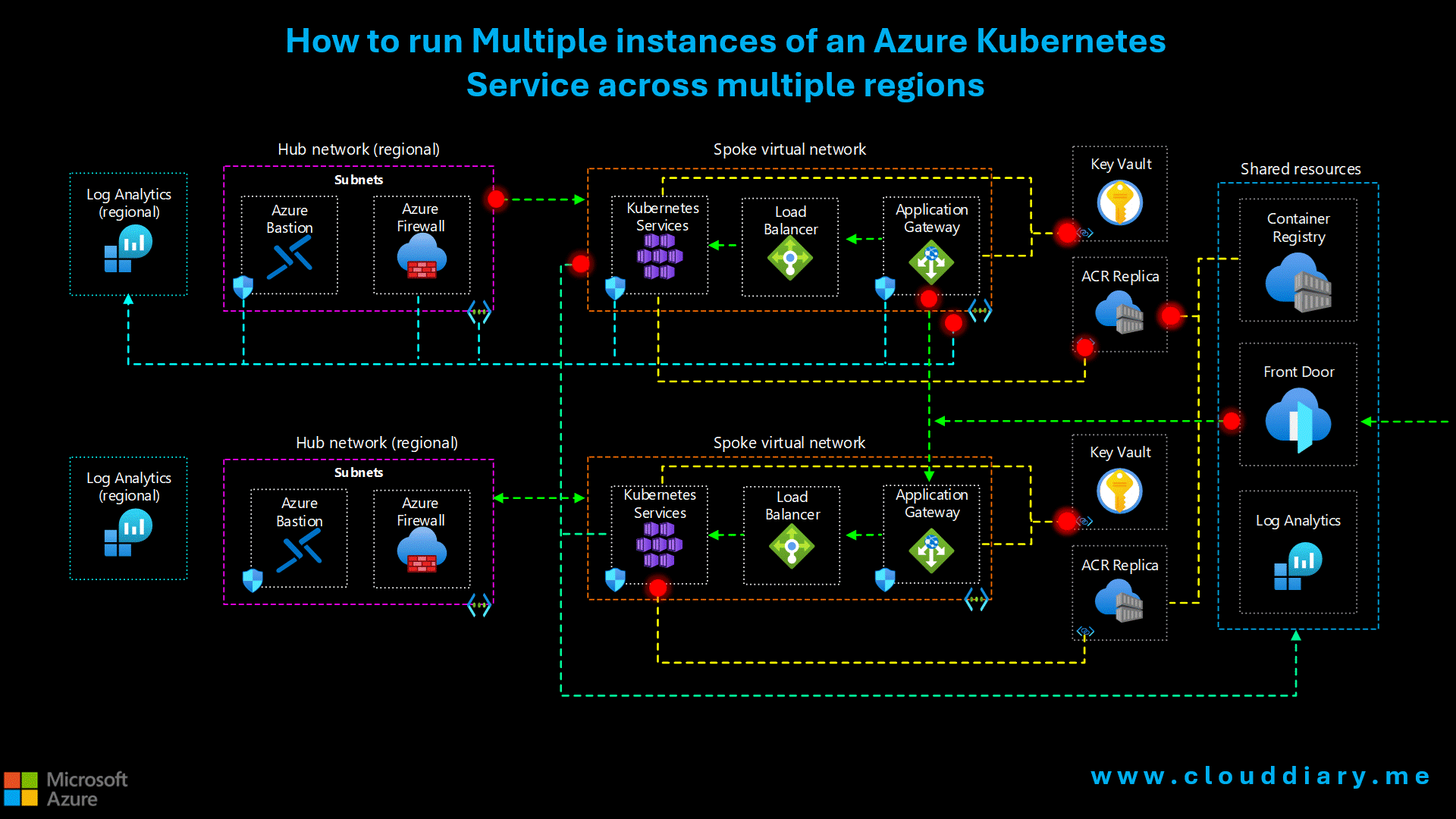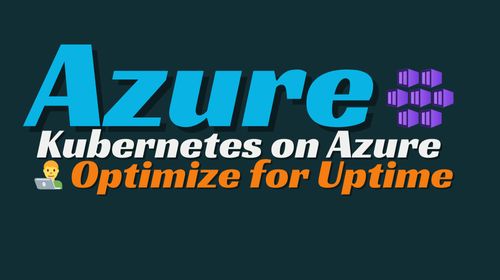- Home
- Cloud Architecture Design
- Run multiple instances of an AKS cluster across multiple Regions 👨💻
Run multiple instances of an AKS cluster across multiple Regions 👨💻
Anuradha
August 29, 2024Achieving Resilience and High Availability with AKS Baseline for Multiregional Clusters
ensuring that applications are always available and perform optimally, regardless of location, is crucial. For businesses with global operations or mission-critical services, deploying applications across multiple regions is essential to achieve high availability, disaster recovery, and low latency. This blog explores the Azure Kubernetes Service (AKS) baseline architecture for multiregional clusters, detailing its components, benefits, and best practices.
Introduction to AKS Multiregional Clusters
Azure Kubernetes Service (AKS) provides a managed Kubernetes environment, enabling you to deploy, scale, and manage containerized applications efficiently. However, relying on a single region for your AKS clusters poses risks, such as potential downtime due to regional failures or suboptimal performance for globally distributed users. A multiregional AKS cluster setup distributes workloads across multiple Azure regions, ensuring resilience, high availability, and improved user experience.
Architecture Overview
The AKS baseline for multiregional clusters is designed to ensure business continuity and optimal performance by leveraging multiple Azure regions. Here’s a breakdown of the key components in this architecture:

🛠️ Components
The multi-region AKS reference architecture includes many components and Azure services. Here are the key components unique to this multi-cluster setup. For the rest, refer to the AKS Baseline architecture:
🌍 Regional AKS Clusters: Multiple AKS clusters are deployed, each in a separate Azure region. During normal operations, network traffic is routed between all regions. If one region becomes unavailable, traffic is redirected to the region closest to the user.
🔗 Regional Hub-Spoke Networks: A regional hub-spoke network pair is deployed for each AKS instance. Azure Firewall Manager policies manage firewall rules across all regions.
🔐 Regional Key Vault: Azure Key Vault is set up in each region to store sensitive values and keys specific to the AKS cluster and supporting services in that region.
📊 Multiple Log Workspaces: Regional Log Analytics workspaces store networking metrics and diagnostic logs. A shared Log Analytics instance holds metrics and logs for all AKS instances.
🌐 Global Azure Front Door Profile: Azure Front Door handles load balancing and traffic routing to a regional Azure Application Gateway instance, located in front of each AKS cluster. It supports global layer 7 routing, essential for this architecture.
🖼️ Global Container Registry: Workload container images are stored in a managed Azure Container Registry. A single registry is used for all Kubernetes instances, with geo-replication enabling image access even if a region is down.
🎨 Design Patterns
This reference architecture employs two key cloud design patterns:
🌍 Geodes (Geographical Nodes): In this pattern, any region can handle any request, ensuring flexibility and redundancy across locations.
🚀 Deployment Stamps: This involves deploying multiple independent copies of an application or its components from a single source, like a deployment template, ensuring consistency and scalability.
Benefits of a Multiregional Cluster Setup
Implementing a multiregional AKS cluster setup offers several key advantages:
High Availability: By deploying AKS clusters in multiple regions, you mitigate the risk of downtime due to regional failures. Traffic Manager or Front Door can automatically route traffic to a healthy region in case of an outage.
Disaster Recovery: With services and data replicated across regions, you ensure business continuity even during catastrophic failures in a particular region.
Low Latency: Users are served from the closest regional AKS cluster, reducing latency and enhancing user experience, especially for applications with global user bases.
Compliance and Data Residency: For organizations dealing with strict regulatory requirements, multiregional deployment allows you to keep data within specific geographical boundaries while still ensuring service availability.
The AKS baseline for multiregional clusters is a Concept that helps organizations achieve resilience, high availability, and low latency for their cloud-native applications. By strategically deploying AKS clusters across multiple Azure regions, businesses can ensure continuous service delivery, even in the face of regional outages. As you plan your multiregional deployment, keep in mind the benefits, challenges, and best practices discussed in this blog to build a robust and reliable AKS environment.

